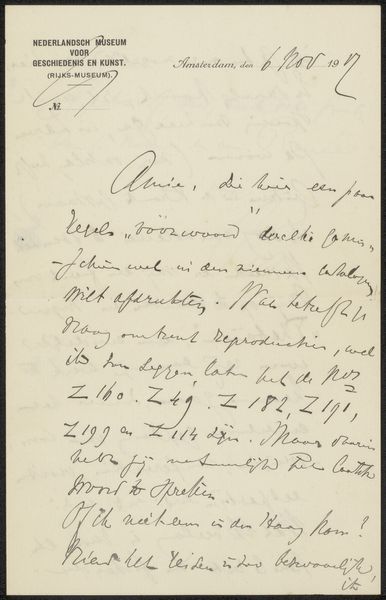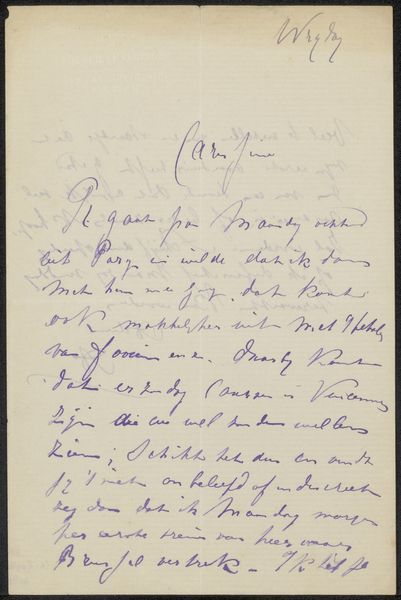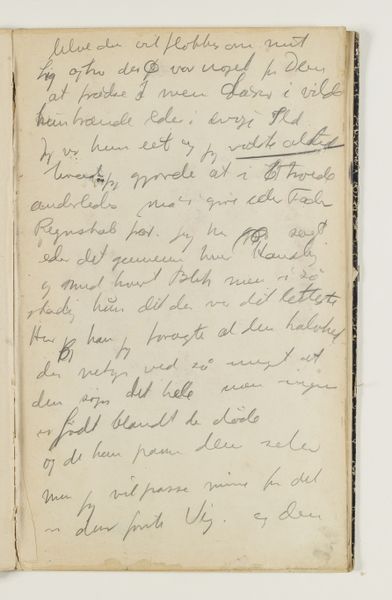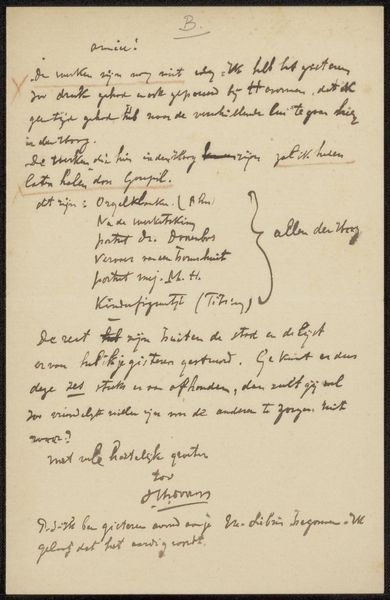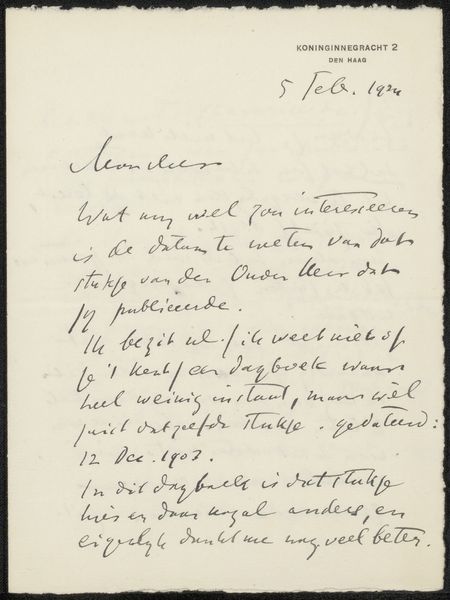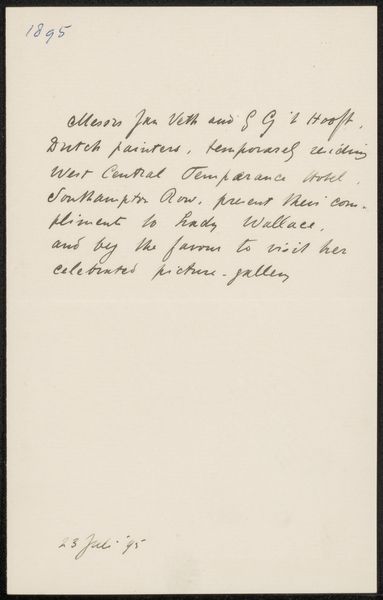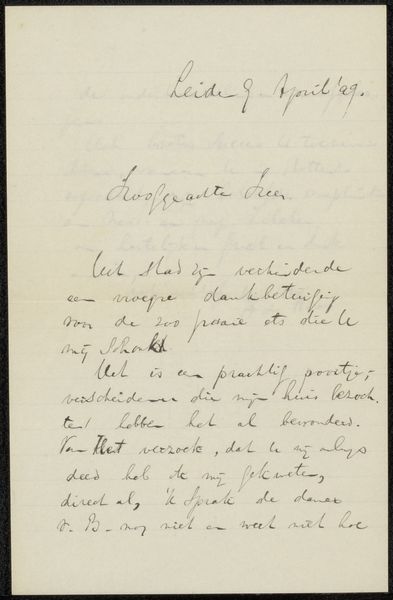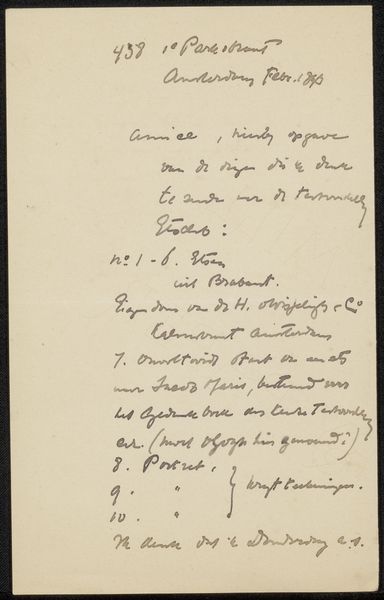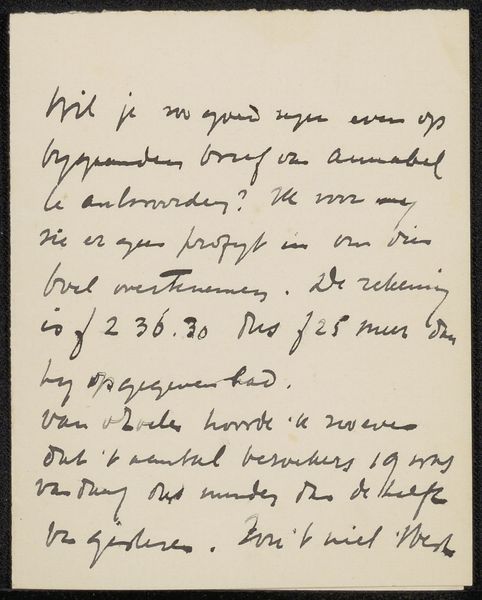
Copyright: Rijks Museum: Open Domain
Editor: Here we have "Brief aan jonkheer Hendrik Teding van Berkhout (1879-1969)," or "Letter to Esquire Hendrik Teding van Berkhout," possibly from 1932, created by Jakob Nieweg using pen and ink on paper. It looks like a handwritten letter, almost like a draft. What jumps out to you about this piece? Curator: This letter offers a glimpse into the artist’s world and raises questions about class and artistic patronage. Letters, especially handwritten ones, can act as direct lines into the societal structures and personal relationships that shaped artistic creation. Who was Hendrik Teding van Berkhout? What was his position in society? Understanding the relationship between Nieweg and van Berkhout could shed light on the dynamics of power and support within the Dutch art scene during this period. Does the content of the letter hint at Nieweg’s financial situation or reliance on patronage? Editor: I see what you mean. It's easy to view it as just a simple letter, but contextualizing the receiver adds layers. What’s interesting to me is the mention of “lithos." Is Nieweg potentially discussing business? Curator: Exactly. It speaks to the practicalities of artistic life. Letters like this aren’t just personal correspondence; they’re also documents of labor, negotiation, and economic survival within a capitalist art system. Considering that 1932 fell within the Great Depression, the mention of prices and a possible discount hints at financial pressures impacting both artist and patron. Does the language used indicate a formal business arrangement, or something more personal? Editor: It’s really interesting to consider it as a negotiation within a specific socio-economic context. I initially saw just handwriting; now, I see the complexities of the art world reflected in this simple document. Curator: Precisely. By analyzing these everyday interactions, we can unearth the hidden power structures and economic realities that influence artistic production and reception. Every stroke of the pen, in this light, becomes a deliberate act within a larger societal framework.
Comments
No comments
Be the first to comment and join the conversation on the ultimate creative platform.
